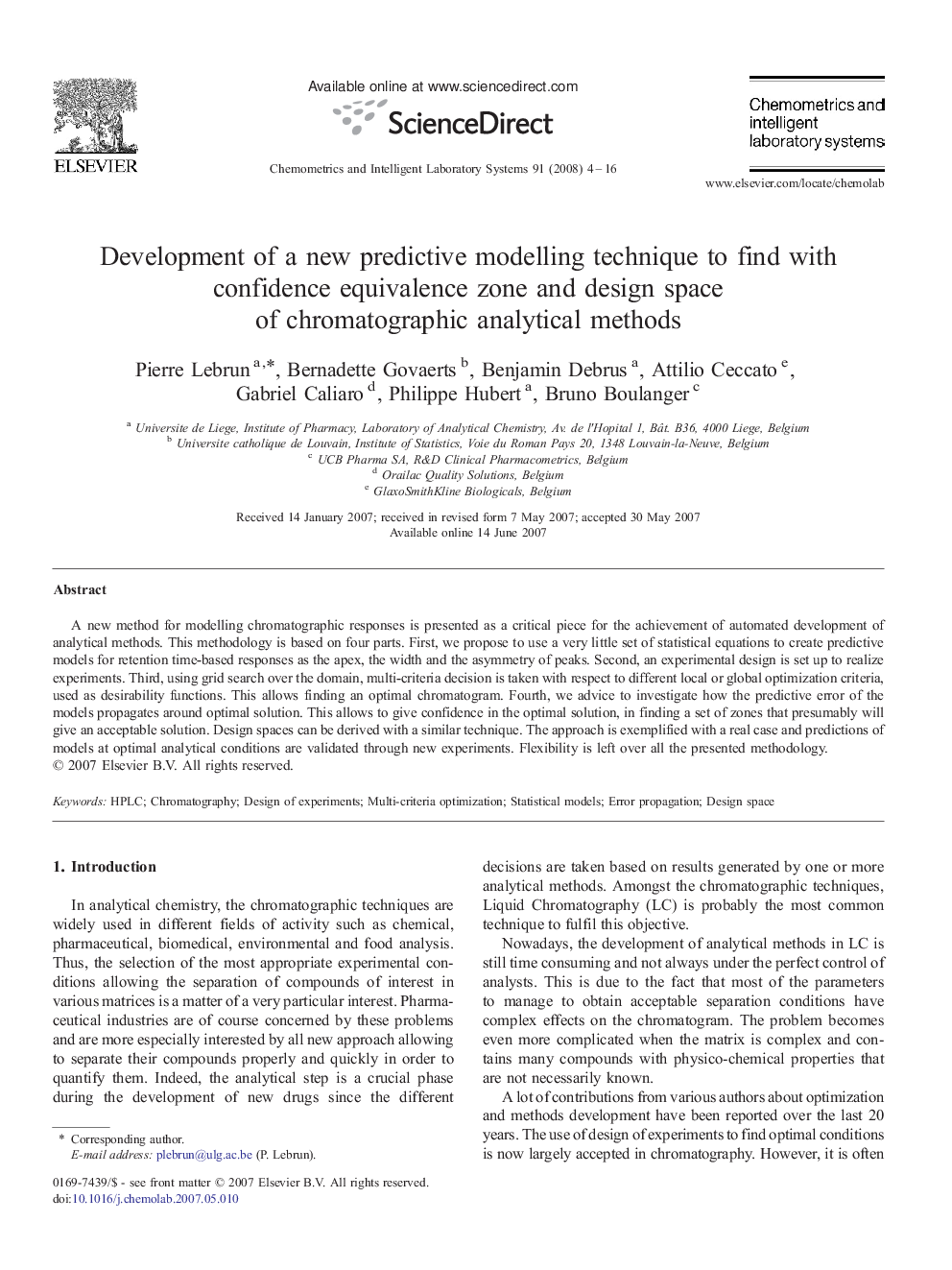| Article ID | Journal | Published Year | Pages | File Type |
|---|---|---|---|---|
| 1181354 | Chemometrics and Intelligent Laboratory Systems | 2008 | 13 Pages |
A new method for modelling chromatographic responses is presented as a critical piece for the achievement of automated development of analytical methods. This methodology is based on four parts. First, we propose to use a very little set of statistical equations to create predictive models for retention time-based responses as the apex, the width and the asymmetry of peaks. Second, an experimental design is set up to realize experiments. Third, using grid search over the domain, multi-criteria decision is taken with respect to different local or global optimization criteria, used as desirability functions. This allows finding an optimal chromatogram. Fourth, we advice to investigate how the predictive error of the models propagates around optimal solution. This allows to give confidence in the optimal solution, in finding a set of zones that presumably will give an acceptable solution. Design spaces can be derived with a similar technique. The approach is exemplified with a real case and predictions of models at optimal analytical conditions are validated through new experiments. Flexibility is left over all the presented methodology.
